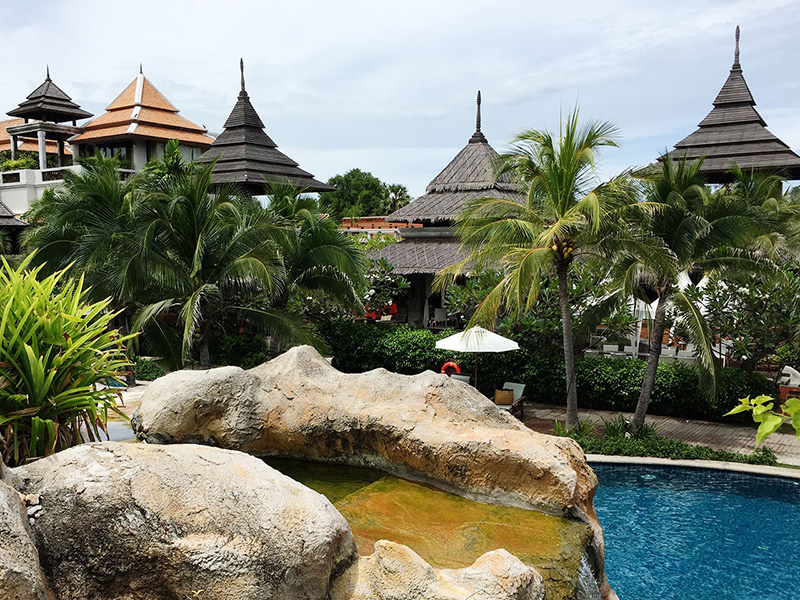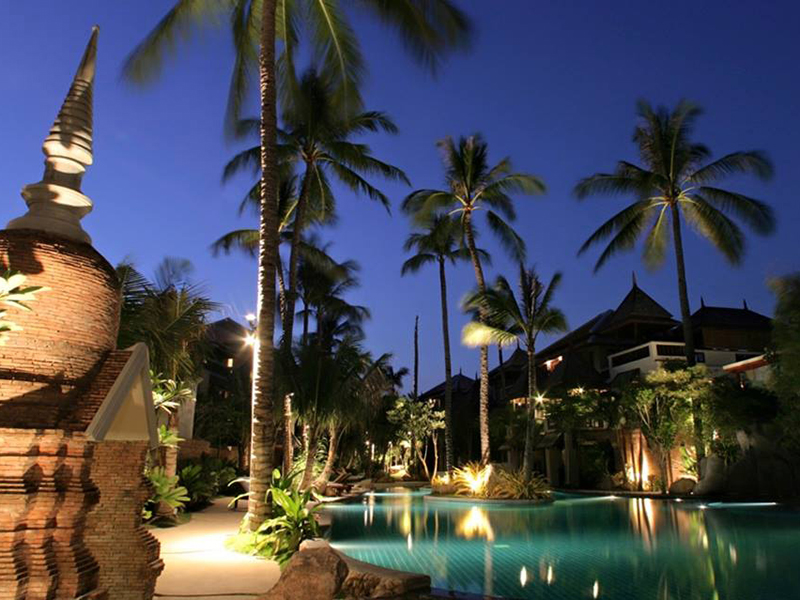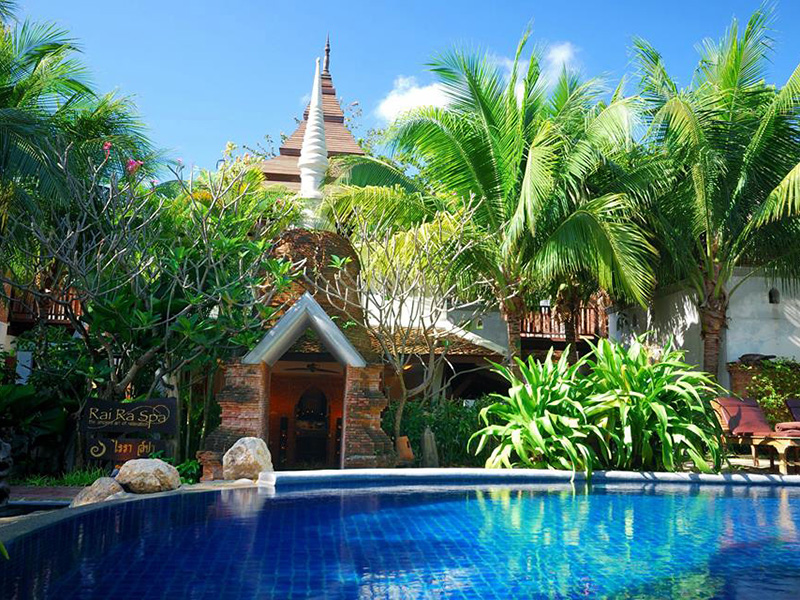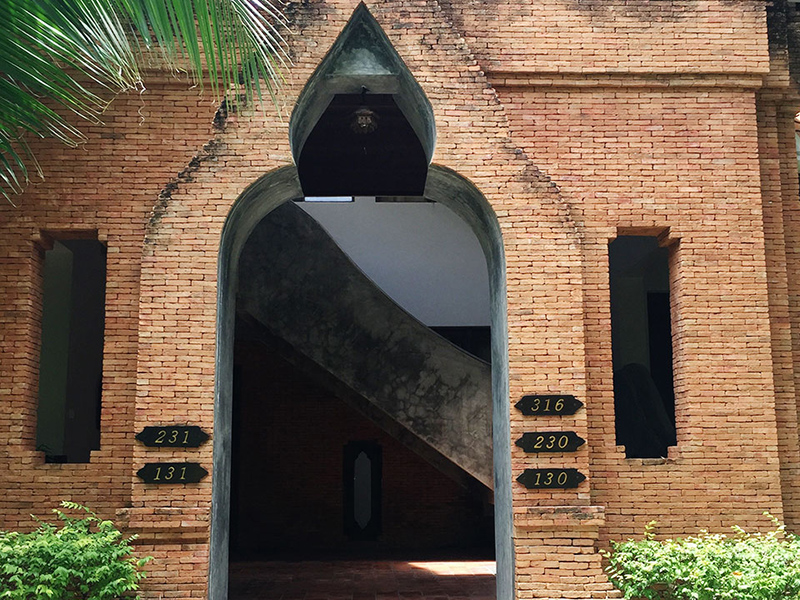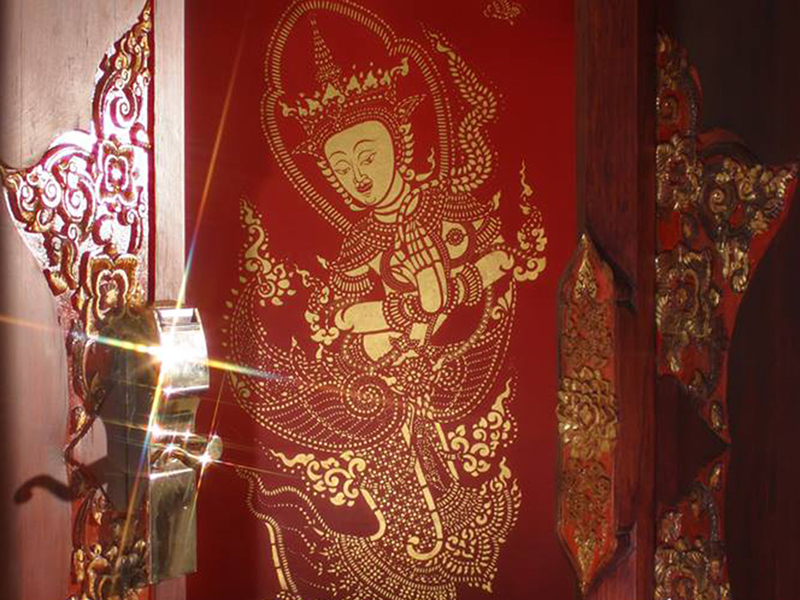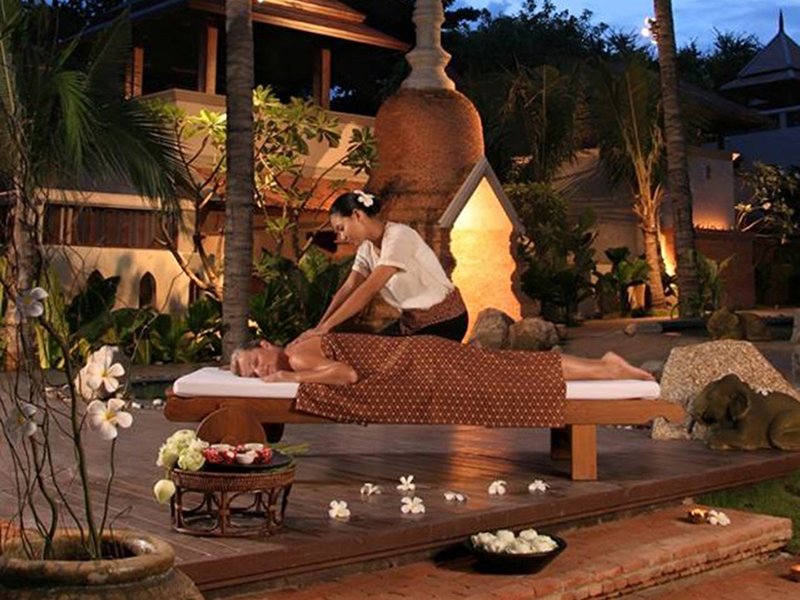This is a charming affair, A love story Khun Chananthip, traveled with her sister to Koh Samui for a vacation on this quiet, undeveloped, tropical island 30 years ago. They stayed at a resort managed by an eager young man, Khun Thitiphan. He diligently took care of the family, and quietly (“He was shy!” she laughed) began his courtship. The strategy worked, the resourceful suitor proposed, and – as love stories surely go – alas, she accepted. She moved to Samui and they began their journey to resort ownership. They soon emerge the as hotel pioneers on the island, with Muang Samui Spa Resort on Chewang Beach and several, free-standing restaurants.
Years later they built this genteel resort. Location, location, location…and lots of elegance. This spacious resort and charming town are a scant four kilometers from the airport. The beach sprawls out from the pool; excellent restaurants line the quaint Soi; and tropical weather adds the exclamation point. This five-star resort is redolent of ancient Ayutthuya: breezes circulate through airy gardens and the open air lobby, soft woods adorn the capacious suites, and gardens decorate the grounds.
It’s luxurious, classy and offers handsome amenities, particularly a clever cave-themed, comforting spa. If you want extravagance, indulge in one of the one-BR, Ocean View pool villas the third floor. Talk about a sweet suite: a long, private pool overlooks the beach; a kitchen lets you prepare a spontaneous snack; a living room allows quiet entertainment; and the view! No wonder weddings are popular here: romantic, idyllic and memorable. It is gracious and welcoming.
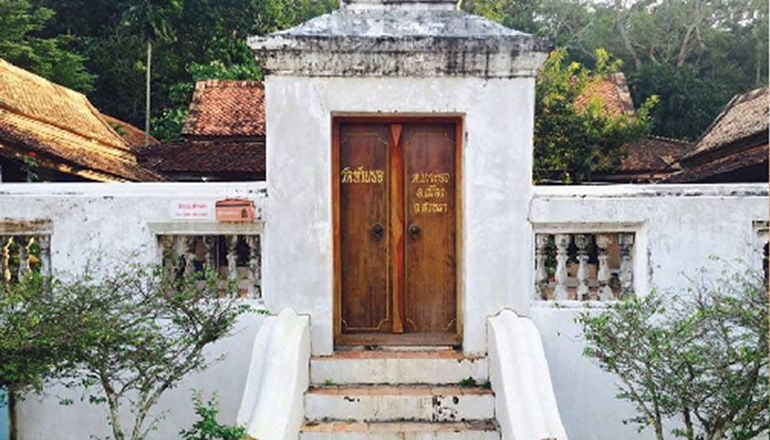
Mr. Thitiphan and Mrs. Chananthip Thanaphatteeranan, the founders and owners of Muang Samui Group were impressed and captivated in all beautiful architectures of Wat Tai Yo and the cult of Mon brick since they have first seen it, thereafter they decided to use these inspiration in blending with southern Thai style architecture structures to design their own house in Chaweng (now being used as the head office).
Muang Samui Spa Resort on Chaweng Beach and Royal Muang Samui Villas on Choeng Mon Beach therefore have been built using the architecture and decoration style of Wat Tai Yo (Buddhist monastery) in Koh Yo (Yo Island), Songkhla province in the South of Thailand.
Koh Yo
A small Island emerges solely from the sea bay of Songkhla – forming a lake – was later connected to mainland by the Tinsulanond Bridge.
Now, Koh Yo is becoming one of the most well-known tourist attractions in Songkhla with an overall area of 9,275 Rai (3,710 acres). Koh Yo benefits from both agriculture and handicraft industries which the most famous, their most famous products are the hand-woven fabric and a special kind of jackfruit called Jampada.
Wat Tai Yo
An ancient Buddhist temple which has a very detailed and decorative architecture, as well as it’s known as the first temple built on Koh Yo. Historians are still uncertain which year was it built however according to Wat Ko Yo specialists, architects and academicians from the Siam Society built it during the reign of King Rama 3 (1787-1851) of early Rattanakosin era. There are many buildings with carefully designed and built decoration within the temple’s area.
Wat Tai Yo
An ancient Buddhist temple which has a very detailed and decorative architecture, as well as it’s known as the first temple built on Koh Yo. Historians are still uncertain which year was it built however according to Wat Ko Yo specialists, architects and academicians from the Siam Society built it during the reign of King Rama 3 (1787-1851) of early Rattanakosin era. There are many buildings with carefully designed and built decoration within the temple’s area.
One of these is the monks’ monastery, which is over 200 years old – it was built of wood in traditional Thai style, roofed with “Koh Yo baked clay tiles” and some other ancient carved tiles, mixed with carved cement at the front fence and door facade. Experts say that the “baked clay tiles” style origins from China and started to be popular in the mentioned period and this trend continued during the reign of King Rama 4 (1804 – 1868).
The “Lanka style pagoda” found on the mount behind the temple was said to be influenced by “Dhammyuttika” style.
Remained its charm, Special Characteristics
Mon Bricks: In traditional Thai architecture, Mon bricks used to be the major elements of permanent building structures. Bricks have been used since ancient times. The Egyptians were the first to invent this way to construct buildings about 2,000 years ago, where they used mud from the rivers to make bricks and construct houses.
In Thailand, bricks were brought in by Khmer people, around 1100 B.E. In the Tawarawadi period, the architectural construction of chedis, (or stupas) were found in the ground and it was passed on to Sukothai period. The constructions found were the ruins of ancient sites such as palaces, chedis and Buddha images. This art was unique for each period. In the Ayutthaya period, bricks were still very popular to use for construction because of the development in city and building construction, such as palaces, buildings and especially temples. It is a tradition that each King must construct his own temple as the symbol of his reign.
Unfortunately nowadays rarely see any constructions using Mon bricks, due to the fact that it is more and more difficult to find high quality material. Making Roof tiles was a main occupation of local resident on Koh Yo, since it started by Chinese in the reign of King Rama 3 over 200 years ago and was much preferred throughout the South. Until it started to go out of trend and receiving less demand in the market in the past few decades.
Muang Samui was probably the last buyer that purchased a big amount of Koh Yo roof tiles for construction of its head office buildings and Muang Samui Spa Resort buildings over 10 years ago, which remained its charm, special characteristics and its story with Muang Samui Group’s properties until now and forever
